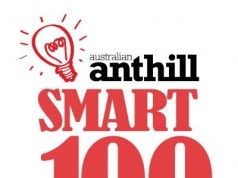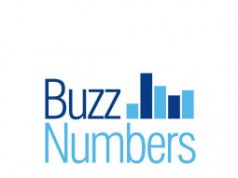Every business owner in the world knows the expression, “I know half my advertising is wasted, I just don’t know which half.” For the most part, the saying is true; most business owners haven’t a clue how to create an advertising argument for their business and couldn’t tell you how successful an advert was. So how can business owners create advertising that will not be wasted, that will be noticed, that will give a compelling reason for the marketplace to choose them over all their competitors?
Why do most adverts fail? By fail, I mean fail to bring in sales. To find the answer to that question you must examine what type of advertising a business owner is using. By far the most common is called institutional advertising, the common traits of an institutional advert are:
- Its focus is on the business, not the customer
- It speaks about features, not benefits
- It is graphics-heavy or sometimes just a graphic with a couple of words
The other big trait of an institutional ad is that it fails the “Logo Test”. If you take adverts from two separate competing companies and swapped the company logos on them, it would not make any difference to the context of the ad, because all institutional adverts look the same and therefore offer no differentiation between the company messages.
So, if institutional advertising is a waste of time for business owners what type of advertising should they be using? They should be using direct response advertising. Direct response advertising differs from institutional advertising in the following ways, among others:
- The complete focus of the advertising message is on the customer.
- The advertising message is benefit-laden.
- It contains few or no graphics unless it adds to the message.
- The advertising message is specific.
How to create an advert that compels people to buy
In order to create a compelling direct response advert, the advert must contain the following items:
A headline that interrupts and commands attention
The headline for your advert must have the power to grab and hold the attention of your target audience so they feel compelled to read your advertising message. In other words, your headline is the advert for your advert.
Studies show that when reading a newspaper or website page, 90 percent of readers will scan the pages, not read them. What that means for you, as a business owner, is if you haven’t got a headline that grabs attention, your advert will not even be noticed, never mind read.
Two of the best ways to create an attention-grabbing headline are:
- Ask a compelling question, the answer to which can be found if they read the rest of the advert e.g. Do You Make These Staffing Mistakes?
- Give a command in your headline e.g. Stop Your Hair loss…NOW!
Write about what is troubling your customers, and how your service/product can help them
To write a compelling direct response advert, you must know your marketplace inside-out – what their troubles are, what their hopes and wishes are, what their needs are. In other words: FOCUS ON THEM. You must also know where your product or service fits in. In other words, you must know how people benefit from using your service or buying your product. The best way to find out this information is by randomly surveying your existing customers as to why they use your service or product as well as surveying those customers who have stopped using your service/product.
Make a list of all the benefits that you can for your service/product based on your own knowledge and the feedback you get from your surveys.
Be specific
When writing the body copy of your advert, be very specific as to the benefits your audience will get from using your service/product. Tell me what specific problem they will solve, or specific results they will achieve. Do not be vague in any way. DO NOT use clever puns or phases or clever twists on words. Use direct, plain, everyday language. DO NOT use puffery, fluff language or jargon.
Make your lede paragraph, the one just under your headline, compelling and interesting as it can make the difference between a winning advert and a losing one. Use the lead paragraph in unison with your headline to draw people into the rest of your advert.
Add credibility to you advertising message
At every point possible, in the body copy of your advert, use testimonials from customers. DO NOT use a testimonial unless you can use the full name of the customer and, if possible, the town/city he/she resides in. Using a testimonial with just initials will just undermine the credibility of your advertising proposition.
Testimonials work because they show that other people have taken the risk of using your service or product and have greatly benefited from doing so. This psychologically lowers the risk in the minds of people thinking about using your service/product but who have not yet done so.
Give a strong, iron-clad guarantee
An iron-clad, no fuss, 100 percent guarantee is one the strongest weapons in you advertising arsenal. It shows your audience that you have full confidence in your service/ product. It also demonstrates to potential customers how far you are willing to go for them if something goes wrong.
In order for a guarantee to be effective it has to be for a long period of time (e.g. one year, lifetime, etc.) and it must be as painful as possible for you the business owner. The more painful it is for you, the more credible it will be in the minds of your marketplace. As an example of a painful, iron-clad guarantee, here is the guarantee I offer:
_____
Our Risk Free, Better Than 100%, Guarantee
David Flannery Consulting, during the lifetime of the contract, does not provide you with:
- Multi-use, market-tested marketing materials, based on current market intelligence PLUS
- Ongoing sales training PLUS
- A methodical, systemised and repeatable business growth system
THEN…
- We will refund 100% of our fee
- Write you a cheque for $2,000 for wasting your time
- Continue to work for you, for free, until we do provide you with the above three items
This guarantee comes without any small print
_____
Make a clear call to action
So, you have grabbed and held your audience’s attention with a compelling headline. You have used a compelling first paragraph to entice them to read the rest of your advertising message. You have stated the benefits of using your product/service and you have shown how other people have benefited from doing so. You have also reduced the risk to them by offering the best, most painful guarantee you can in order to show how much faith you have in your product/service. What now?
Now you give your audience a firm call to action. You tell them exactly what they must do and when they must do it in order to gain the benefits of your service/product as outlined in the advert. Again you must be direct and specific in terms of telling your audience exactly what you want them to do.
Include all contact details
Make sure that all your contact details are included in your advert, phone, mail address, email address and website.
Keep editing your advert until it is fine-tuned
Once you have written your first draft, leave it for an hour and come back and revise and fine-tune it. Remove all puffery, excess words and sentences. Simplify, simplify, simplify. Remember this: simplified language takes a lot of work.
Place your advert where your target market will read/hear it
In my experience, this is where a lot of business owners go wrong. They spend a lot of time and energy on creating a compelling advert for their business that does a fantastic job of telling people why they should buy their service or product, then place it in a newspaper or magazine that their target market would never read in a million years, or on a radio station that they would never listen to.
You must know which papers and magazines your potential and existing customers read, which radio stations they listen to and which websites/forums they frequent. You can only find this information out by asking them.
Track responses
You need to make sure you can track responses from your adverts. The easiest way is to place a pretend name in your contact details. Give each publication/radio station you book the advert with a different contact name. This way, you will be able to track which publication/station is getting you the best and worse responses. Then, and you can adjust where you place your advert accordingly, which will allow you to optimise your advertising budget.
David Flannery is founder of David Flannery Consulting, an international Business Growth Consultancy that helps companies focus methodically and systematically on increasing their sales and profits, reducing their customer losses to competitors and separating themselves from their competition. He is an international business writer, speaker and thought leader and the creator of the acclaimed SETE Business Growth System and Competitive Edge Sales System. He can be contacted on +61 2 4353 4564
Photo: altemark (Flickr)





![Strategic Alliances with Simone Novello [FREE INFOGRAPHIC]](https://anthillonline.com/wp-content/uploads/2015/08/Capture6-300x194.jpg)
![Learn how to use Instagram as a business tool [FREE INFOGRAPHIC]](https://anthillonline.com/wp-content/uploads/2012/12/nickelbackinstagram-100x75.jpg)
![The Facebook Honey Trap with James Tuckerman [CHEAT SHEET]](https://anthillonline.com/wp-content/uploads/2015/11/Screen-Shot-2015-11-26-at-11.34.14-100x75.png)

![Seven essential steps to a successful podcast with Loren Bartley [Cheat Sheet]](https://anthillonline.com/wp-content/uploads/2015/11/Screen-Shot-2015-11-26-at-11.21.58-100x75.png)
![Five essential things to get right if you want to raise capital, with Bryan Vadas [FREE CHEAT SHEET]](https://anthillonline.com/wp-content/uploads/2015/08/vadas-3d-cover-01--100x75.png)
![Listing on the ASX: should you use the front door or the back? Here’s what the experts have to say [VIDEO]](https://anthillonline.com/wp-content/uploads/2015/05/ASX-300x350.jpg)
![A frame within a frame: Volkswagen makes a point using YouTube [VIDEO]](https://anthillonline.com/wp-content/uploads/2013/08/VolkswagenFrame-300x350.jpg)
![How dog are you? This viral campaign sets the cats amongst the, um, dogs? [VIDEO]](https://anthillonline.com/wp-content/uploads/2014/08/HowDog-300x350.jpg)

![Do you want to innovate more? Then you need to become a “now-ist” [VIDEO]](https://anthillonline.com/wp-content/uploads/2014/07/idea-bulb-300x300.jpeg)
![How to price your product or service in 8 steps with Steve Major [FREE INFOGRAPHIC]](https://anthillonline.com/wp-content/uploads/2015/07/Screen-Shot-2015-11-26-at-11.40.10-300x194.png)
![Five essential ingredients for a humming homepage with James Tuckerman [FREE REPORT]](https://anthillonline.com/wp-content/uploads/2015/07/homepage-checklist-1680-01-copy-100x75.png)
![The Gaddie Pitch in three simple sentences with Antony Gaddie and James Tuckerman [CHEAT SHEET]](https://anthillonline.com/wp-content/uploads/2015/08/GADDIE-PITCH-updated-3D-cover--100x75.png)
![The Top 5 Most Insanely Dumb Mistakes made by Rookie and Seasoned LinkedIn Users, with David Hobson [FREE REPORT]](https://anthillonline.com/wp-content/uploads/2015/07/Screen-Shot-2015-11-26-at-14.29.18-100x75.png)
![New Zealand’s Xero eyes US IPO, further disruption as subscribers increase [INFOGRAPHIC]](https://anthillonline.com/wp-content/uploads/2014/07/sruuuuujana-212x194.png)
![Ever wonder if your ‘content marketing’ is really just crap? You gotta see this! [INFOGRAPHIC]](https://anthillonline.com/wp-content/uploads/2014/08/content-100x75.jpg)
![7 Business Lessons From Game of Thrones [INFOGRAPHIC]](https://anthillonline.com/wp-content/uploads/2014/10/infographic-games-of-thrones-041-100x75.jpg)
![How to build your own Media Empire… In seven steps with Nathan Chan [INFOGRAPHIC]](https://anthillonline.com/wp-content/uploads/2014/10/Nathan-Chan-Infographic-e1413419529176-100x75.jpg)
![5 Business Lessons From Tinder [INFOGRAPHIC]](https://anthillonline.com/wp-content/uploads/2014/10/Tinder-Elegant-Infographic-100x75.jpg)



